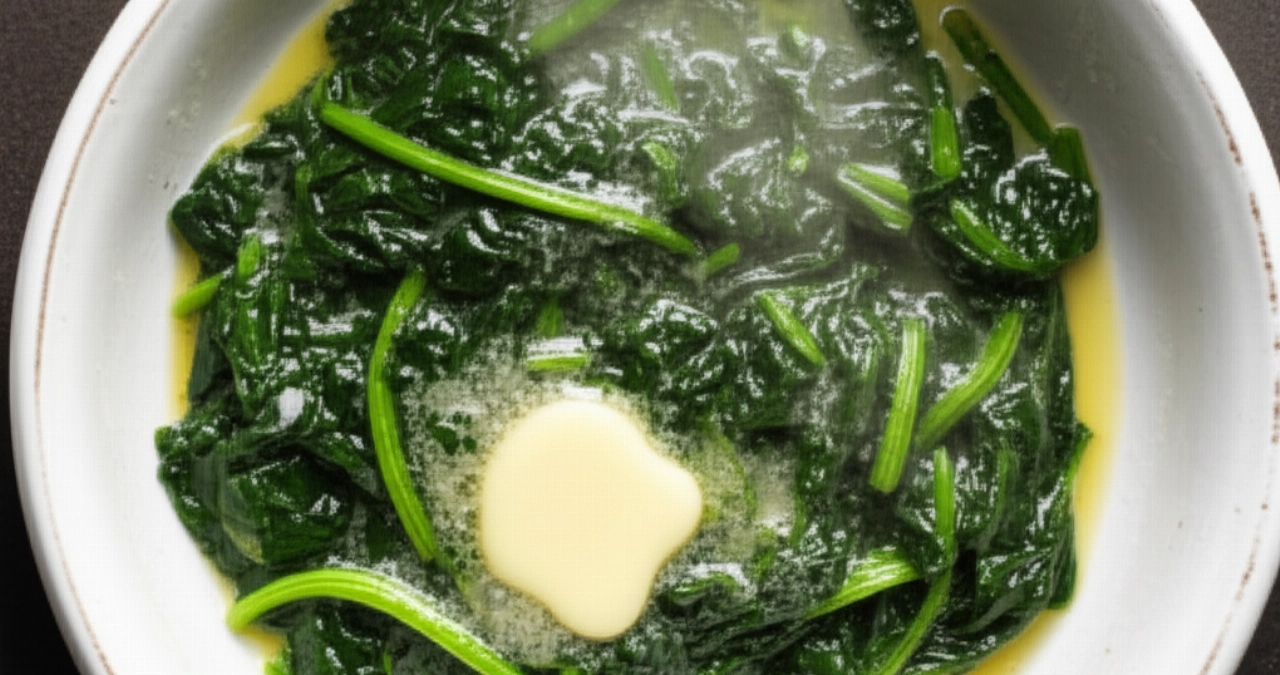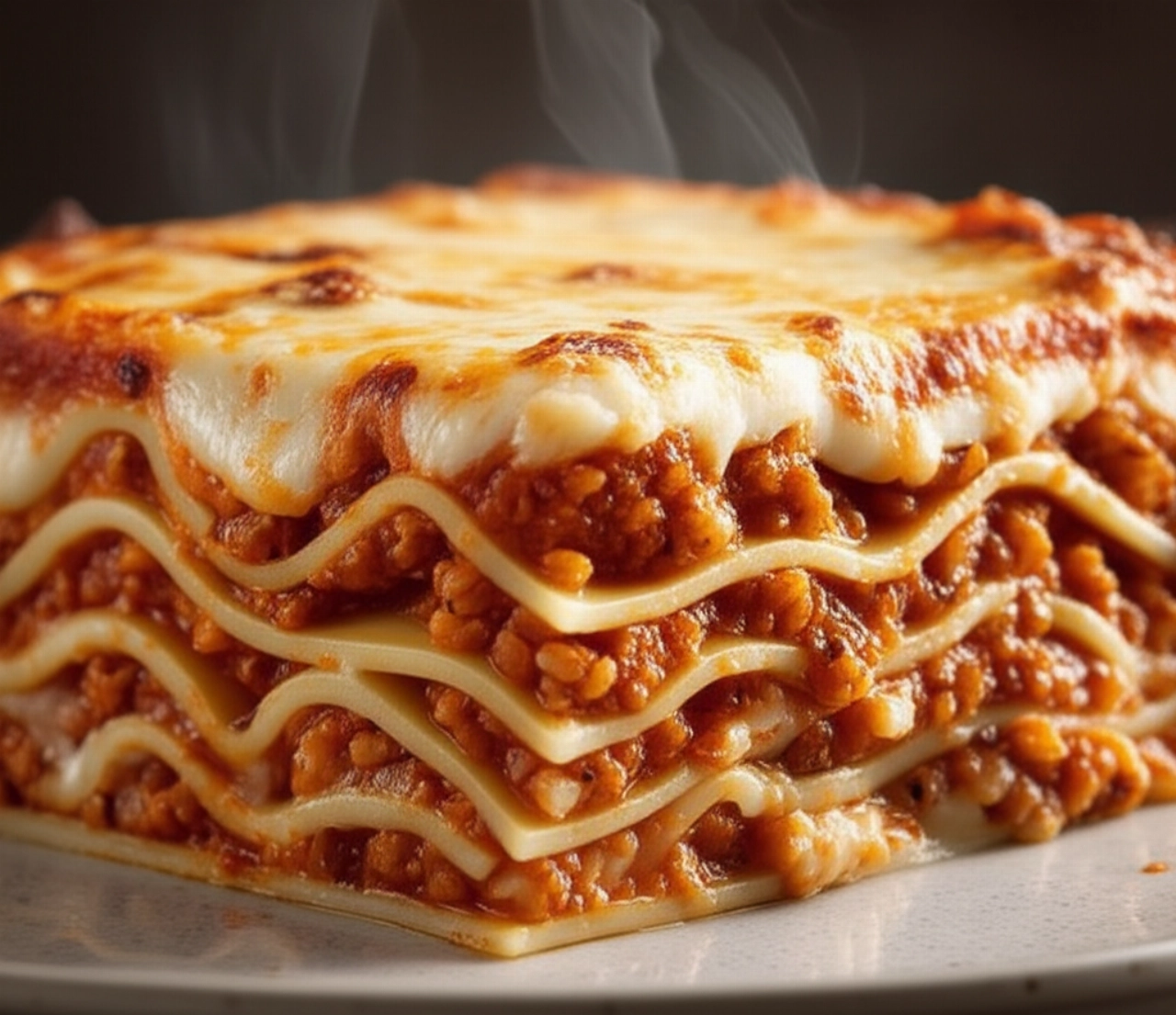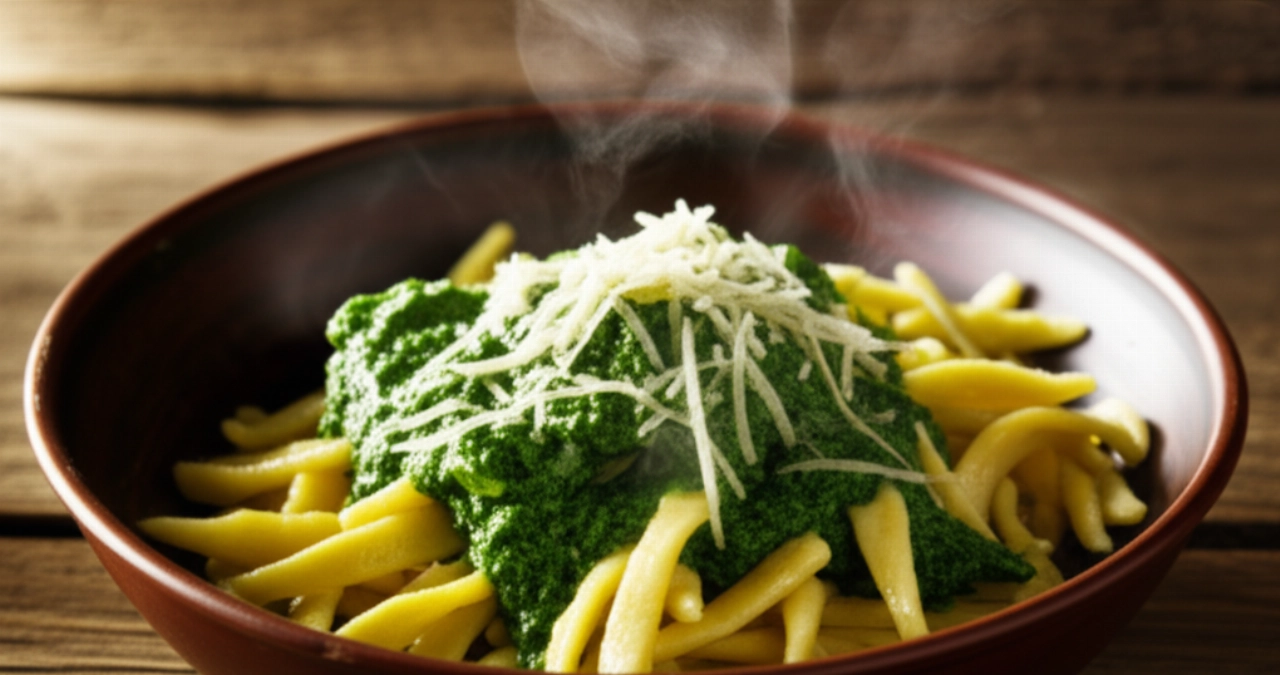There's a scent that speaks of celebration, of family gatherings, of special Sundays. That unmistakable aroma of Green Bolognese Lasagna, a dish that is a true embrace, a masterpiece of Emilian cuisine that conquers everyone at the first bite.
But how many times have you worried that the pasta sheets would turn out tough, the ragù too dry, or the flavor not truly authentic to tradition? That feeling of performance anxiety, the fear of wasting precious ingredients, the dread of not replicating that "old-fashioned" taste... I know it well, we've all been there.
Make yourself comfortable. Here you won't just find a list of ingredients, but the definitive guide, full of tricks and tips, to prepare the best Green Lasagna of your life. I'll guide you step by step to create Green Lasagna with impeccable pasta sheets and a rich, enveloping ragù, blending into an unforgettable harmony of flavors, never dry or too heavy, just like grandma would make it. Success is guaranteed, and the taste... that of the most authentic tradition!
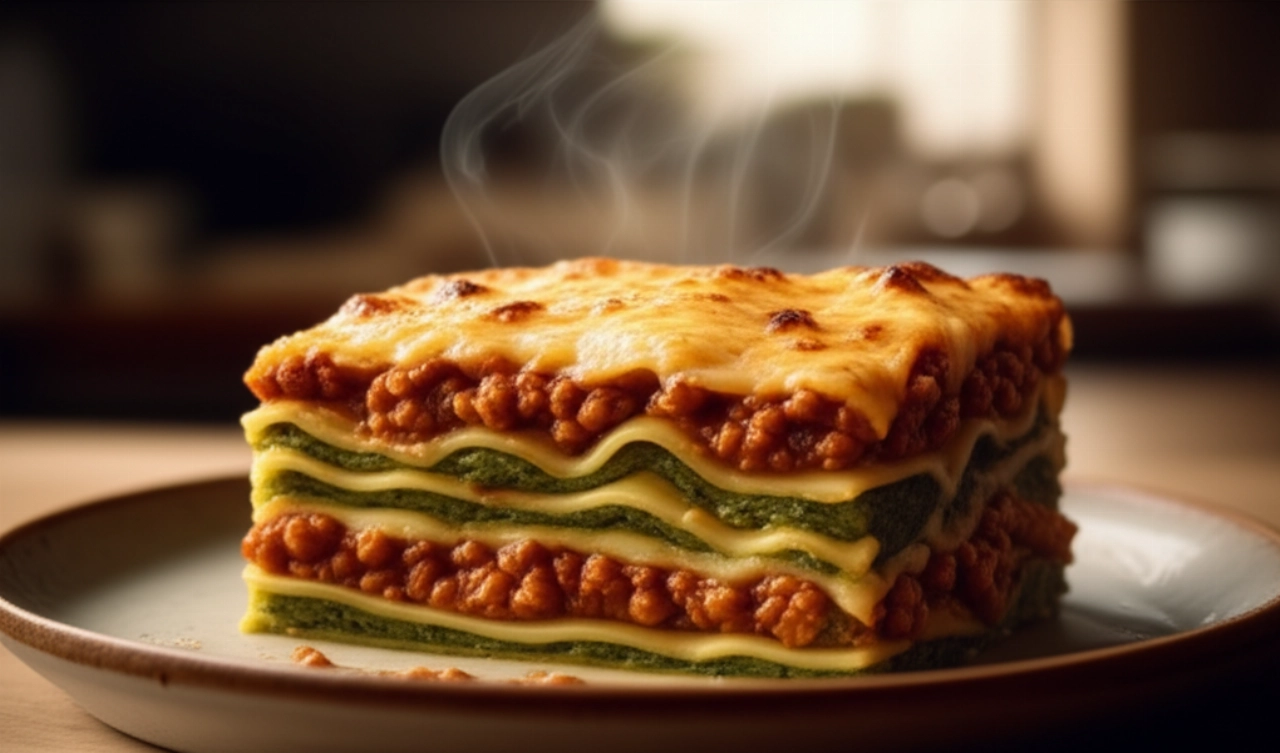
Ingredients for Perfect Green Lasagna: The Choice That Makes the Difference
For such an iconic dish, the quality of ingredients is fundamental. It's not just about quantity, but the "why" behind each choice. Here's what you'll need for a result that earns applause:
For the Green Pasta Sheets (approx. 500g):
- 300g 00 Flour: The base for elastic and silky pasta sheets.
- 3 large Eggs: Bind the dough and give color and flavor. Choose them very fresh!
- 150g fresh Spinach (or 100g frozen): The secret to the color and an extra lightness. They must be boiled and squeezed very well!
- A pinch of salt: To enhance the flavor.
For the Bolognese Ragù (approx. 1 kg):
- 300g Ground beef: Choose a cut that's not too lean, like shoulder or belly, for a more flavorful and juicy ragù.
- 150g Pork pancetta (sweet or stretched): Finely chopped, it's the fatty base that adds depth of flavor.
- 50g Carrot: For sweetness and aroma.
- 50g Celery: For the aromatic and fresh note.
- 50g Onion: The indispensable base for the soffritto.
- 200ml Tomato passata: Of excellent quality, thick and full-bodied.
- 100ml Dry red wine: To deglaze and cut through richness, adding complexity.
- 100ml Meat broth (or vegetable): To keep the ragù moist during long cooking.
- Extra virgin olive oil: For the initial soffritto.
- Salt and black pepper: To taste.
For the Béchamel Sauce (approx. 700ml):
- 50g Butter: The fatty base for the roux.
- 50g 00 Flour: To thicken the béchamel.
- 500ml Whole milk: Cold, to prevent lumps.
- A pinch of nutmeg: The classic and indispensable aroma.
- Salt: To taste.
For Assembly:
- 100g Grated Parmigiano Reggiano: Don't skimp on quality, it's the final touch for savoriness and gratin.
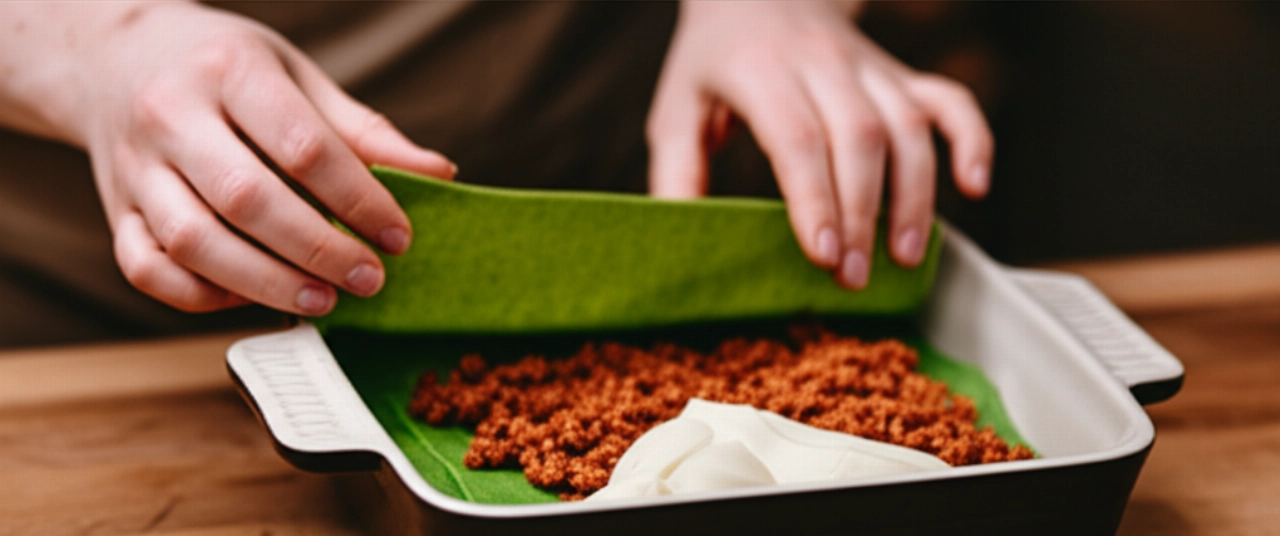
3 Common Mistakes with Green Lasagna (and How to Avoid Them)
Preparing lasagna might seem like a daunting task, but with a few precautions, you'll avoid the most common pitfalls that can ruin your masterpiece:
- Tough or Breaking Pasta Sheets: This is often due to dough that's too dry or hasn't rested enough. The green pasta sheet should be elastic and thin, but not transparent. After rolling it out, let it rest for a few minutes before using it. And remember: don't overcook it! Just one minute in boiling salted water, just enough to soften it, then immediately into cold water to stop the cooking.
- Dry or Bland Ragù: The ragù is the heart of the lasagna. The mistake is cooking it too quickly or with too little liquid. It should simmer gently for at least 2-3 hours, adding broth if necessary, to allow the flavors to meld and the meat to become very tender. Don't rush the process!
- Lumpy or Too Thick/Thin Béchamel: The béchamel must be velvety and of the right consistency. If it's lumpy, you probably added hot milk or too quickly. Add cold milk, a little at a time, stirring vigorously with a whisk. If too thick, add a little hot milk; if too thin, let it simmer a bit longer or add a pinch of roux (melted butter and flour) separately.

The Magic Touch: Grandma's Secret for Lasagna
My grandma always used to say: "Lasagna isn't a dish, it's an act of love." And her secret, what made her lasagna unforgettable, was twofold. First: patience with the ragù. She never tired of repeating that the ragù "must cry," meaning simmer slowly, almost imperceptibly, for hours. This allowed the flavors to meld into a perfect embrace, making the meat incredibly tender and the sauce velvety. Second: pasta sheets thin as a veil. She rolled them by hand, almost transparent, and said you should be able to read a newspaper through them. This ensured that the pasta absorbed all the flavors without making the dish heavy, melting in your mouth. Don't worry if you don't have grandma's rolling pin, a pasta machine does an excellent job, the important thing is the thinness!
Let's Prepare Green Lasagna Together: The Step-by-Step Guide
Now that we have all the secrets, let's get cooking! Follow each step carefully, I'll guide you to success.
1. Prepare the Bolognese Ragù (the day before is ideal!)
- Soffritto: Finely chop the carrot, celery, and onion. In a large pot (preferably earthenware or thick-bottomed), heat a drizzle of oil and sauté the vegetables over low heat for about 10 minutes, until soft and transparent.
- Pancetta and Meat: Add the chopped pancetta and let it brown until crispy and it has released its fat. Add the ground meat and brown it over high heat, breaking it up with a wooden spoon, until it has changed color and there are no more liquids.
- Deglaze: Pour in the red wine and let it evaporate completely, stirring. This step is crucial for degreasing and adding depth of flavor.
- Tomato and Cooking: Add the tomato passata and a ladleful of hot broth. Mix well, salt, and pepper. Bring to a boil, then lower the heat to minimum, cover, and let simmer for at least 2-3 hours (even 4-5 if you have time!), stirring occasionally and adding broth if the ragù becomes too dry. It should be thick and enveloping.
2. Prepare the Green Pasta Sheets
- Spinach: Wash the spinach, boil it in a little salted water for a few minutes, drain it, and squeeze it firmly to remove all excess water. Chop it finely.
- Dough: On a pastry board, make a well with the flour. In the center, crack the eggs, add the chopped spinach, and a pinch of salt. Start mixing with a fork, incorporating the flour from the edges, then continue by hand.
- Kneading: Knead the dough vigorously for at least 10-15 minutes, until it is smooth, elastic, and homogeneous. Do not add more flour unless strictly necessary.
- Resting: Wrap the dough in plastic wrap and let it rest at room temperature for at least 30 minutes. This will make the pasta sheets easier to roll out.
- Rolling: Divide the dough into several pieces. Roll out each piece with a pasta machine (or with a rolling pin) to the desired thickness (the second to last or last setting on the machine; it should be thin but not break). Cut the sheets to the size of your baking dish.
3. Prepare the Béchamel Sauce
- Roux: In a thick-bottomed saucepan, melt the butter over low heat. As soon as it's melted, remove from heat and add all the flour at once, stirring vigorously with a whisk to create a smooth paste (the roux).
- Milk: Return to low heat and, still stirring with the whisk, gradually add the cold milk in a thin stream. It's crucial that the milk is cold to prevent lumps from forming.
- Cooking: Continue stirring constantly until the béchamel thickens and begins to simmer. This will take about 5-7 minutes. Turn off the heat, add salt and nutmeg. The béchamel should be fluid but not watery, velvety.
4. Assemble the Lasagna
- Prepare the baking dish: Grease a baking dish (approx. 20x30 cm) with a little béchamel on the bottom.
- First layer: Lay down a layer of green pasta sheets.
- Filling: Cover the pasta sheet with a generous layer of ragù, then a layer of béchamel, and finally a generous sprinkle of Parmigiano Reggiano.
- Continue: Repeat the layers (pasta sheet, ragù, béchamel, Parmigiano) until all ingredients are used, finishing with a generous layer of ragù, béchamel, and Parmigiano.
- Topping: If you wish, you can add a few small knobs of butter on the top layer for a more golden gratin.
5. Baking
- Oven: Preheat the static oven to 180°C (350°F).
- Bake: Bake the lasagna for about 30-40 minutes, or until the surface is golden and crispy and the filling is hot and bubbling. If you see it browning too much, cover with aluminum foil.
- Resting: Once cooked, remove the lasagna from the oven and let it rest for at least 10-15 minutes before cutting and serving. This will allow the flavors to settle and make cutting easier.
Tips and Frequently Asked Questions about Green Lasagna
Here are some of the most common questions I get asked, with answers to clear up any doubts:
- Can I use pre-made pasta sheets? Certainly, if time is short! Choose good quality pasta sheets, preferably egg-based. It won't be like homemade, but the result will still be excellent. Remember that some pre-made sheets don't require pre-cooking.
- How can I make the ragù more flavorful? Besides long cooking, you can add a tablespoon of tomato paste to the soffritto, or a piece of pork rind during slow cooking (to be removed before serving). A pinch of nutmeg in the ragù can also make a difference!
- Can I prepare lasagna in advance? Absolutely! You can assemble them completely and store them in the refrigerator, covered with plastic wrap, for 1-2 days before baking. In fact, they often taste even better the next day because the flavors have melded.
- How can I freeze lasagna? You can freeze lasagna both raw and cooked. If raw, assemble them and cover well with plastic wrap and aluminum foil. If cooked, let them cool completely. In both cases, they keep for about 2-3 months. To thaw them, transfer them from the freezer to the refrigerator the night before, then bake or reheat them in the oven.
- Why is my béchamel lumpy? Most likely, you added the milk too quickly or it wasn't cold. Remember: cold milk in a thin stream and vigorous whisking. If lumps form, you can use an immersion blender to make it smooth.
There you have it! Now you don't just have a recipe, but all the secrets to bring a dish to the table that tastes of home, tradition, and love. Your Green Bolognese Lasagna will be a triumph of flavors and textures, a true masterpiece that will make your diners' eyes light up.
Don't be afraid to experiment. Cooking is an act of creativity and generosity. But start with this solid base, and you'll see that applause won't be lacking. You'll feel like a true chef, but with the warmth and wisdom of a grandmother.
Have you tried our recipe? We're very curious to see your masterpiece! Leave a comment below, tell us how it went, or share a photo on Instagram tagging @SearchRecipes. If you loved this lasagna, you can't miss our recipe for the perfect Bolognese Ragù or for a textbook Fresh Egg Pasta. And for a side dish that pairs perfectly, try our Creamy Mashed Potatoes!
